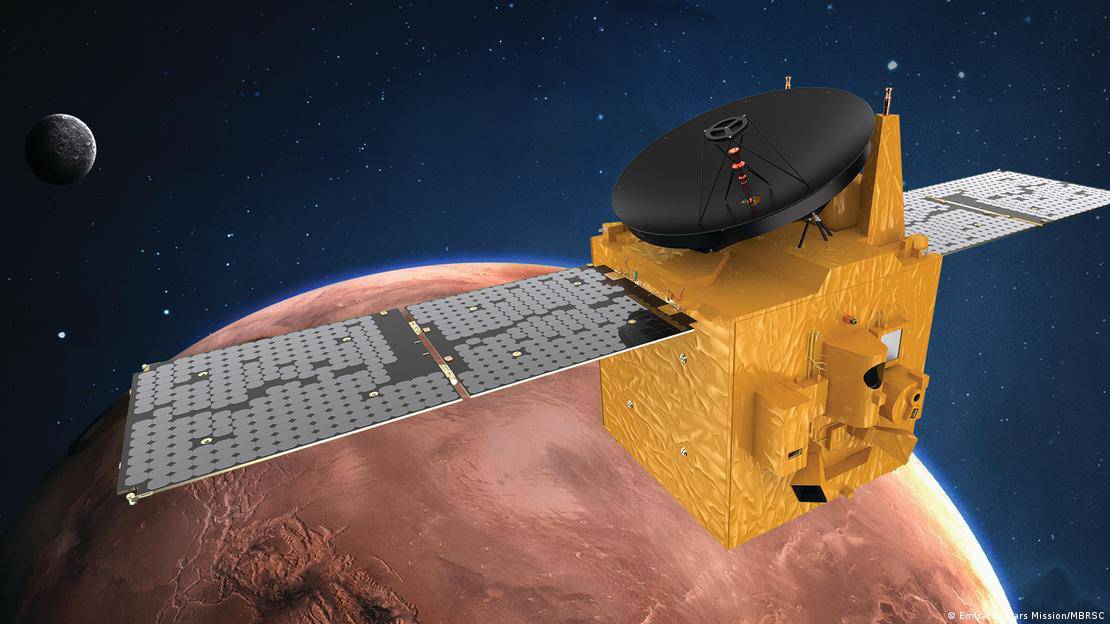CAPE CANAVERAL, FLORIDA – The United Arab Emirates’ Amal spacecraft has captured detailed photos of Deimos, one of Mars’ two moons, revealing new insights into the small, little-explored celestial body, Associated Press reported Monday.
The spacecraft flew within 100 kilometers (62 miles) of Deimos in March, capturing close-up shots of its odd-shaped, cratered surface and the previously unexplored far side.
These images offer scientists a more detailed understanding of Deimos, which is just 15 kilometers by 12 kilometers by 12 kilometers (9 miles by 7 miles by 7 miles) in size.
The findings were presented Monday at the European Geosciences Union’s general assembly in Vienna. They challenge the leading theory that Deimos is an asteroid captured in Mars’ orbit eons ago.
Scientists suggest that the moon may have originated from Mars itself.
The larger Martian moon, Phobos, which is almost double the size of Deimos and orbits much closer to Mars – just 6,000 kilometers (3,700 miles) away, the closest of any planet’s moon in our solar system.
Hessa al-Matroushi, lead scientist for the Amal mission, explained that observing Deimos was a compelling idea due to its proximity to the spacecraft’s orbit. Deimos’ orbit around Mars stretches 23,000 kilometers (14,000 miles) out, close to the inner part of Amal’s orbit.
This mission marks the closest a spacecraft has come to Deimos in almost 50 years. In 1977, NASA’s Viking 2 came within 30 kilometers (19 miles) of the moon, and since then, other spacecraft have photographed Deimos but from much farther away.
Amal, which means “Hope” in Arabic, was launched on July 19, 2020, one day shy of the 50th anniversary of humanity’s first moon landing by Apollo 11’s Neil Armstrong and Buzz Aldrin.








